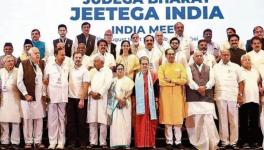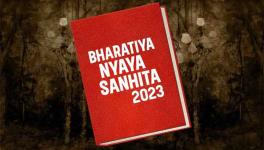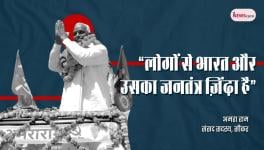1 Worker Dies Every Week, Yet Media Normalise Sewer Deaths
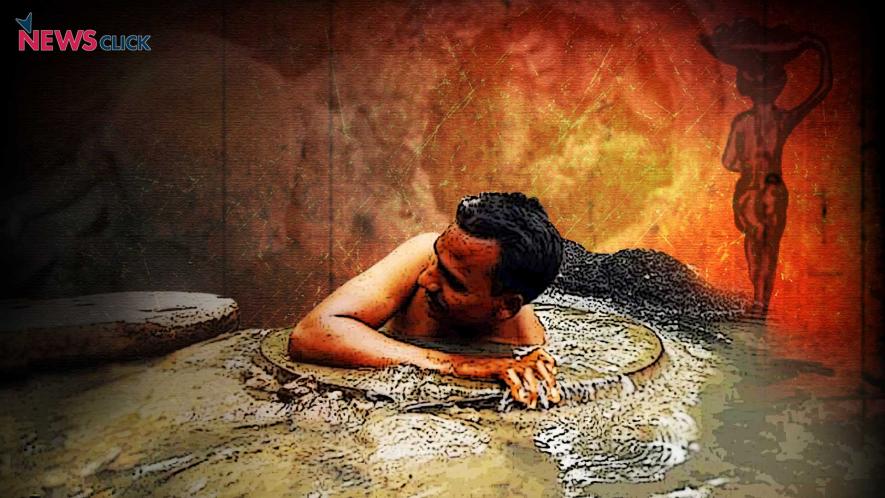
In May this year, 11 sewer deaths were reported in both public and private spaces, cleaning septic tanks, sewer lines, and even working inside under construction sewer lines. Such reports on sewer deaths keep appearing in the news media regularly. The courts keep reprimanding the government and the government keeps promising action. Yet, the deaths continue and have now started getting treated as day-to-day affairs across these institutions.
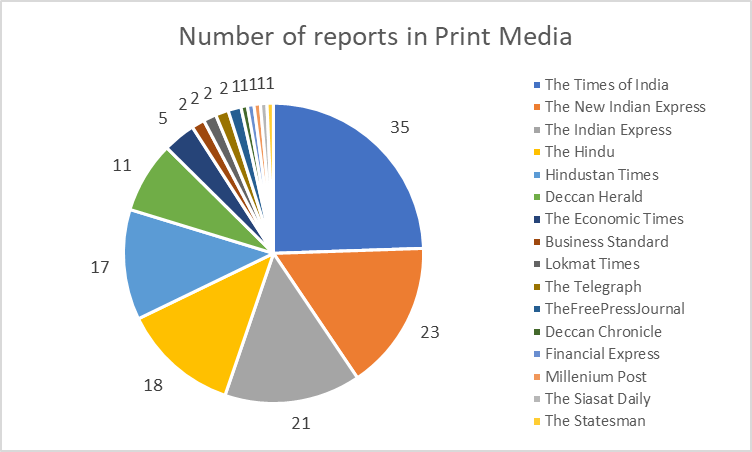
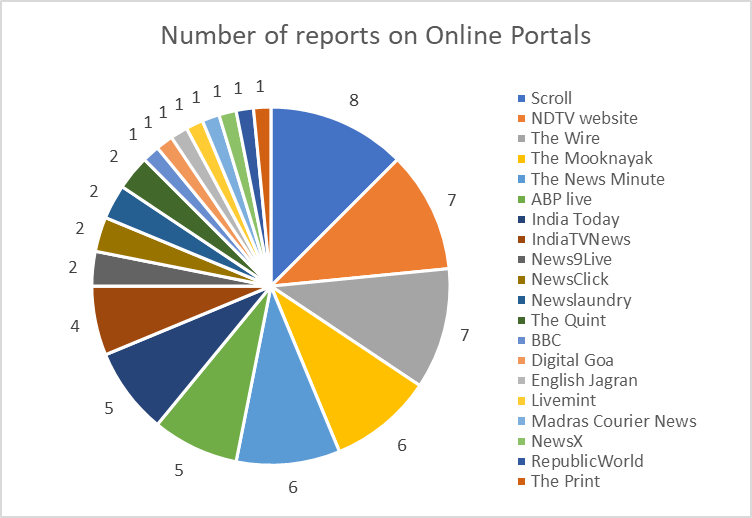
This writer analysed news reports on sewer deaths in the past one year for patterns and gaps in the way the issue was being reported. The sample includes 207 English news reports, from May 23, 2023 to May 25, 2024, in Indian newspapers and news websites.
A total of 67 deaths have been reported in the news media in the given span of one year, averaging to more than one death every week. Yet, hardly any of the sampled newspapers or websites is treating sewer deaths as a burning issue needing immediate attention and solution.
Comprehensive critical analysis of the situation and persistent discussion in the news for stopping sewer deaths are mostly missing. As much as 69% coverage was given to the issue by print media while online news websites gave the remaining 31% coverage. However, more coverage by a publication or portal does not mean good quality reporting which can drive change.
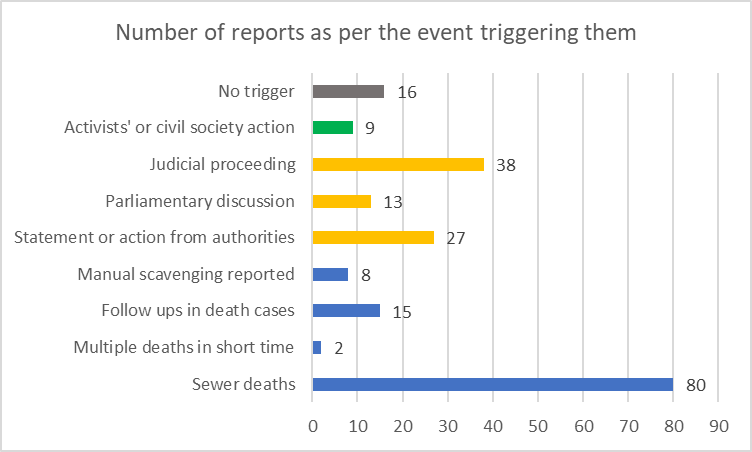
Only when the deaths happen the news media find it worthy to cover the issue, that too briefly. Majority of the reports that came on sewer deaths in the past one year were only to report new sewer deaths. A few reports also came when multiple sewer deaths happened in a short period of time, and some are follow-ups on sewer death cases such as reporting when notices were issued, cases filed, arrests made, or compensations paid.
In total, individual cases of sewer deaths trigger about 47% of the reports. Another major trigger for about 38% reports on the topic was when sewer deaths got discussed in Parliament, ministers’ responses, courtrooms, verdicts, and government reports and announcements, or some government authority took some action such as municipal corporations issuing guidelines or buying robots.
The collective expressions of the manual scavenging community, such as their protests, got coverage by only nine reports out of 207 sampled. The pattern shows that most of the time, news media need a “trigger event” to be reminded that the issue of sewer deaths exists in this country. Only 8% reports discussed sewer death without any immediate trigger event. And only seven reports included the narratives of the people still engaged in manual scavenging. With such limited reporting, the discourse on manual scavenging remains highly dominated by the government.
Voiceless Victims or Vocal Citizens?
In May 2023, it had been more than a year of Safai Karmachari Andolan (SKA) protesting sewer deaths and referring to sewer victims as “citizens”. In this remarkable protest, where manual scavengers and their families came out themselves and raised their voices to demand justice, these deaths were referred to as “murders” and the community collectively asked the government and society - “Stop Killing Us,” which was also the title of their campaign.
The shared sense of injustice because of denial of their fundamental right to life was so strong that the community demanded an apology from the Prime Minister for the ongoing sewer deaths. None but one story appeared in the mainstream newspaper The Times of India and two on news websites, The Mooknayak and NewsClick. And not surprisingly, no apology came from the Prime Minister for sewer deaths happening across the country every other day.
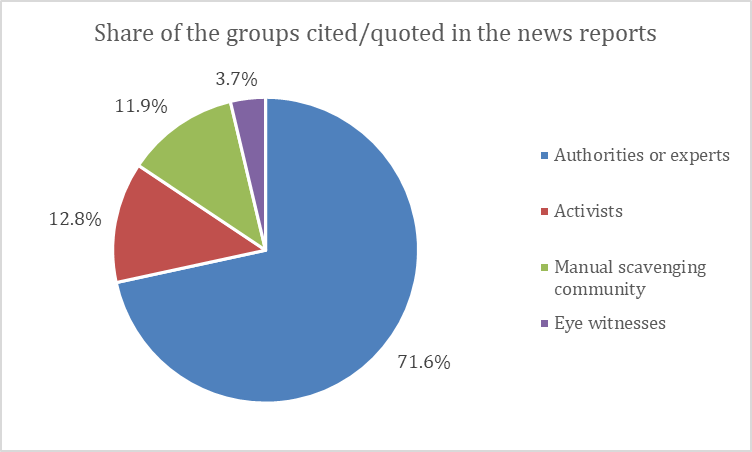
The community most affected by sewer deaths has very less say in the way it is being framed and discussed in the mainstream. About 72% of the share of all the people or institutions cited or quoted was of government authorities or experts. Also, the quotes of activists were used more often than that of actual manual scavengers.
The workers’ voices, expressing their concerns, opinions and demands, were starkly missing in most of the sampled reports. Among the manual scavenging community, the families of the victims of sewer death were quoted in 20 reports, while the workers still engaged in the practice were quoted in only seven reports.
In the absence of their narratives in the mainstream discourse on the topic, it is no wonder that the policies and schemes designed to curb manual scavenging and sewer deaths and to rehabilitate the community have failed and would continue to do so.
The recognition comes only in death. The names of manual scavengers come up only when sewer deaths are to be reported. And quickly after, they become part of the macro statistics on sewer deaths in India. Manual scavengers, thus, remain dehumanised even in news reports about them, their narratives of struggles for survival dying unheard along with them. While the community has a voice, it is being treated as mute by the news media, adding to the injustice that it is already facing.
Dalit Deaths, by Accident or by Design?
The focus in these news reports was mostly on reporting deaths and cases in which compensations were paid. However, these are not accidental deaths. Sewer deaths in India have been by now widely discussed and critiqued in courtrooms, Parliament, and even in news media.
Those hiring workers for manual cleaning of sewer lines or septic tanks, and even those availing these contracts are likely to be well aware of the fatal risk. Yet, only 9% of the studied news reports directly or indirectly raised questions about the number of convictions in these death cases.
Convictions didn’t get mentioned much even in reports on the judicial discussions on the matter. Most of the judges were quoted mainly for rebuking the government for non-implementation of safety measures or non-payment of compensations, but not much on the poor rate of convictions. Among the 38 reports on judicial proceedings, only eight reports mention judges commenting on the poor rate of convictions, not invoking the Scheduled Caste and Scheduled Tribe (Prevention of Atrocities) Act, and not booking senior government officials in the cases of sewer deaths. The news that the Madras High Court clearly asked to file FIR against Commissioners of Corporations, Municipalities and Panchayat Unions in case of any sewer death got covered by only four news reports among these.
Additionally, majority of the news reports do not emphasise on the people that were behind these deaths. Among the mere 28 reports that have named the accused, most have named small-level people, such as small-scale contractors that are often themselves sanitation workers, supervisors, organisation’s staff members, or poor house owners.
Even when companies get named, their small-level employees get targeted and booked, but not the leadership. Only one report mentioned the Director of a company being booked and another named a Ward Councillor being booked after the intervention of a political leader. This goes on while the Prohibition of Employment as Manual Scavengers and their Rehabilitation Act 2013 holds the principal employer responsible in cases of manual scavenging, hazardous cleaning, and sewer death.
Based on this law, various high courts and the Supreme Court have also asked top-level officials to be booked in cases of sewer death, as mentioned earlier. The result of this lapse in reporting is a gross depoliticisation of the issue. The media attention is instead on keeping an account of the number of deaths and compensation settlements. While strict convictions of those in decision-making positions could have stopped this evil practice long back, the discourse keeps the society distracted in the mundane. The routine of sewer deaths has thus been tacitly accepted, even regularised, normalised or rather institutionalised with the help of such unquestioning news media discourse.
Not more than 13 reports (6.3%) engaged in deeper comprehensive critical analyses of sewer deaths. Seven among these are from online portals, including one by BBC, and two reports each by Newslaundry, The Mooknayak, and The News Minute. The remaining six are done in print media, which includes three detailed reports by The New Indian Express, and one each by Deccan Herald, The Indian Express, and The Times of India.
Most of these reports include quotations and data from multiple sources, and the narratives of manual scavengers are given substantial attention. While 11 of these 13 reports connected the issue of sewer death with the caste system, only seven reports pointed out the exploitative nature of neoliberal contractual practices.
Let us first look at the relevance of caste here. The data tells that the caste system is still very much alive in this country. To mention a few sectors, we see mostly Brahmins working in the occupations of knowledge creation and dissemination, most Banias still dominating the business sector, and most Dalits still engaged in caste-prescribed occupations.
In one of my previous studies with sanitation workers, it was found that as high as 95% sanitation workers were from Dalit communities. Government data says that 97.25% of the identified manual scavengers are from Scheduled Castes. It is thus their birth in manual scavenging communities which brings them closer to dying a sewer death- vulnerable by birth.
What adds to this vulnerability over the lifetime of manual scavengers is their till-date exclusion from opportunities for good education, employment, networking, and gaining political power, rendering them further available for and dependent on caste-prescribed exploitative “livelihoods”.
The role of caste in sewer death is thus foundational. And yet, only 12% of the studied news reports directly or indirectly identified the deceased workers as Dalits. Most reports managed to avoid referring to caste like this report by The Times of India did even while mentioning the Supreme Court quoting Ambedkar, or this report by the same publication covering the radical Ambedkarite SKA protests. A Scroll report uncritically mentioned the Madhya Pradesh High Court referring to manual scavengers to be from “economically weaker sections of society.”
When Class Capitalises on Caste
India, as a modern state claiming remarkable progress in terms of development and equal opportunities for all should also be able to address the caste-based disabilities imposed on Dalits. However, instead of securing the lives of manual scavengers through their inclusion in formal and accountable employment, the stories of sewer deaths tell a trend of increasing informalisation, lack of accountability, and exploitation of workers which ultimately kills them.
A critical look at India’s neoliberal economic approach is thus needed. The contract system is a child of this approach which has been a key reason for depriving manual scavengers of safety measures and income security. The contractors determine whether workers will be offered good opportunities, wages, and the needed safety measures. The contract system in the sanitation sector shamelessly capitalises on Dalit workers’ dependence on sanitation jobs for the sake of their survival. Dipali Mathur, an international scholar on
environmental humanities, would explain this as an example of “caste in class,” where the caste system has been cleverly adopted and used for further profit by the modern class system.
A pertinent question is why for the most part the Indian news media are silent on these larger root causes? Use of any statistics in a news report does make it appear more serious and objective, but is such coverage really fair to manual scavengers? And most importantly, is this kind of journalism challenging the status quo and driving any change?
A recent Oxfam report revealed that the leadership of India’s English news media is highly dominated by privileged caste people. The report also points out that caste-related issues rarely get any coverage on these media portals then. In keeping their reporting on sewer deaths inefficient, the news media thus participate in the processes of maintaining caste and class hierarchies.
Applying the world-renowned Noam Chomsky’s propaganda model to this scenario, this can be seen as a classic example of Brahminical bourgeoisie’s propaganda at play, where the system is such that seemingly well-intentioned news is an outcome of a filtering process which aligns it with the propaganda of maintaining the caste status quo. Alternative narratives are rendered unimaginable. Shreyas Sreenath, assistant professor of anthropology at Bowdoin College in the US, identifies this in his recent paper as ‘Brahminical necropolitics’, which has continued the savage caste-based violence in a more civilised manner by using the overburdened urban sewerage as an alibi.
(Special thanks to Swapnil Jogi for his critical feedback on the article)
The writer is Faculty, FLAME University, Pune, Maharashtra. The views are personal.
Get the latest reports & analysis with people's perspective on Protests, movements & deep analytical videos, discussions of the current affairs in your Telegram app. Subscribe to NewsClick's Telegram channel & get Real-Time updates on stories, as they get published on our website.









